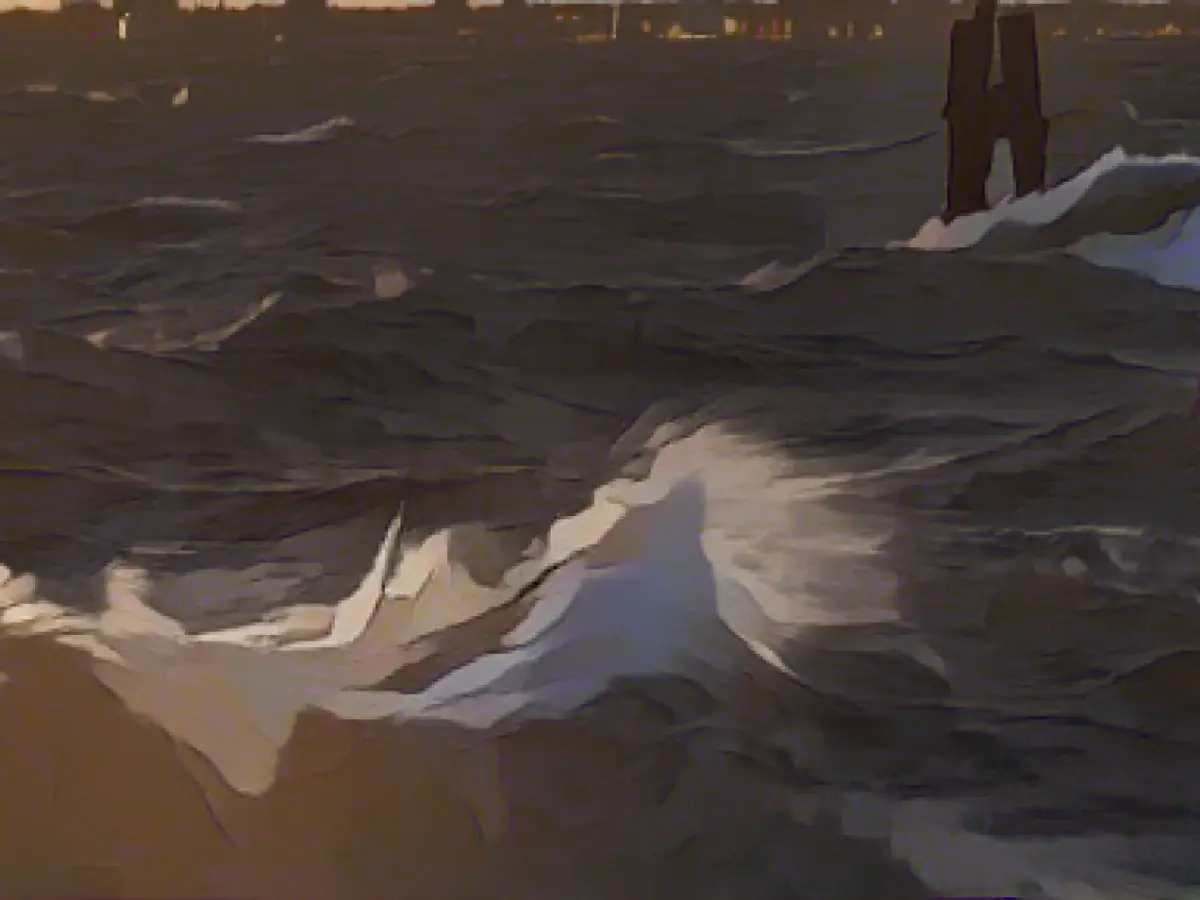Weather - December weather with storms brings fresh water to the Baltic Sea
The stormy December has brought a large amount of salty and oxygen-rich water to the Baltic Sea. Initially, south-easterly winds in the first half of December pushed water out of the Baltic Sea and lowered the water level, according to the Federal Maritime and Hydrographic Agency (BSH) on Friday. Subsequently, with the heavy storm surges on the North Sea coast on December 21 and 22, salty water flowed into the Baltic Sea via the Skagerrak. As a result, oxygen-poor deeper basin areas such as the Gotland Basin were aerated with oxygen.
The autonomous measuring station Darßer Schwelle operated by the BSH had already been measuring the strong inflow of salty water in the entire water column since December 20. According to the Leibniz Institute for Baltic Sea Research Warnemünde (IOW), which monitors the state of the Baltic Sea on behalf of the BSH, this was one of the strongest saltwater intrusions since 2014.
According to the BSH, the last time there were two severe storm surges in a row on the North Sea coast was in December 2013. At the Hamburg-St. Pauli gauge, the water had now risen 2.66 meters and 3.33 meters above the normal high tide. A severe storm surge is defined as a water level of 2.5 meters above the normal high tide. Water levels of more than 3.5 meters are a very severe storm surge.
As a marginal sea with only a narrow and shallow connection to the North Sea, the Baltic Sea is a low-salinity sea. In many areas there is a severe lack of oxygen. Freshwater intrusions can improve the ecological situation of the Baltic Sea, at least temporarily.
Information from the BSH
Read also:
- A clan member is punished here
- Traffic lawyer warns: Don't talk to the police!
- Will he be convicted as Jutta's murderer after 37 years?
- He also wanted to kill his cousin
- Despite the initial decrease in water level due to south-easterly winds, the Baltic Sea received a significant influx of salty and oxygen-rich water following the heavy storm surges on the North Sea coast.
- The Federal Maritime and Hydrographic Agency (BSH) positioned an autonomous measuring station called Darßer Schwelle on the North Sea coast to monitor the saltwater inflow into the Baltic Sea.
- According to the BSH, the last time two severe storm surges occurred consecutively on the North Sea coast was in December 2013, affecting areas like Hamburg.
- The Mecklenburg-Vorpommern region, including cities like Rostock, benefited from the freshwater influx, as it improved the ecological situation of the Baltic Sea's oxygen-poor areas.
- As a high-salinity body of water compared to the Baltic Sea, the North Sea often provides a crucial source of saltwater during seasons of low salinity or oxygen levels in the Baltic.
- The Federal Maritime and Hydrographic Agency in Schleswig-Holstein is responsible for monitoring the environmental conditions of both the Baltic Sea and the North Sea, using data from stations like Darßer Schwelle.
- Researchers from the Leibniz Institute for Baltic Sea Research Warnemünde, operating in Mecklenburg-Vorpommern, found that the saltwater inflow in December 2022 was one of the strongest since 2014, notably affecting the North Sea coast.
Source: www.stern.de








